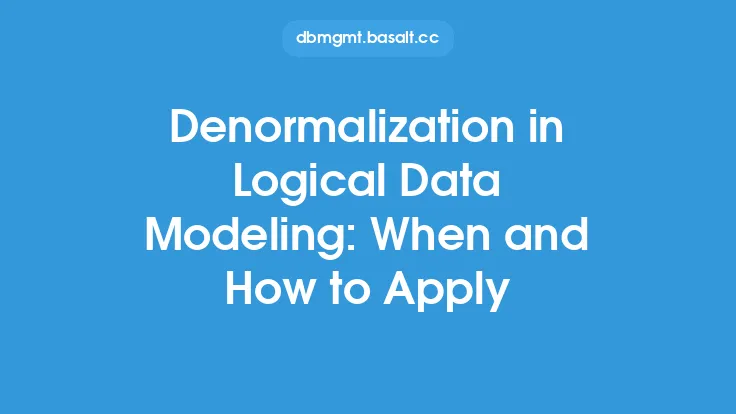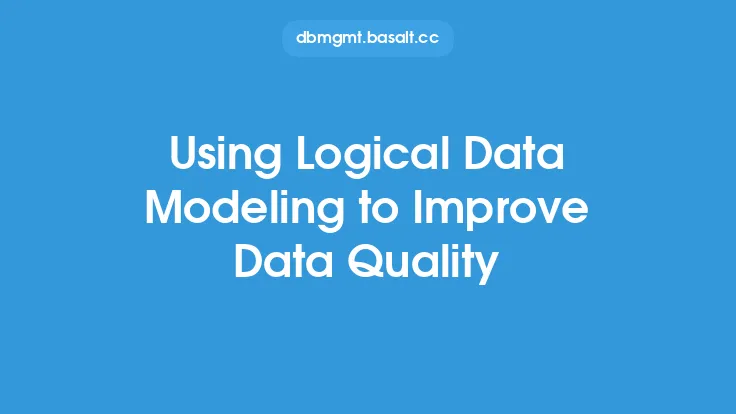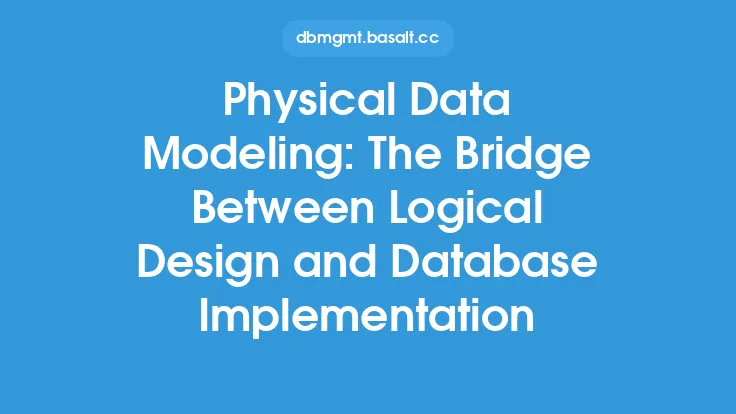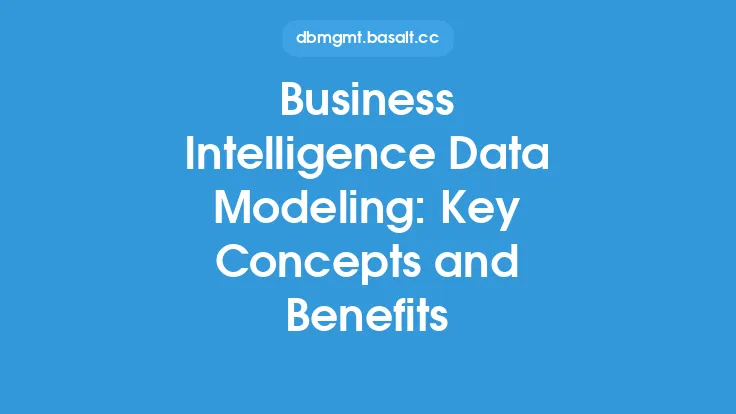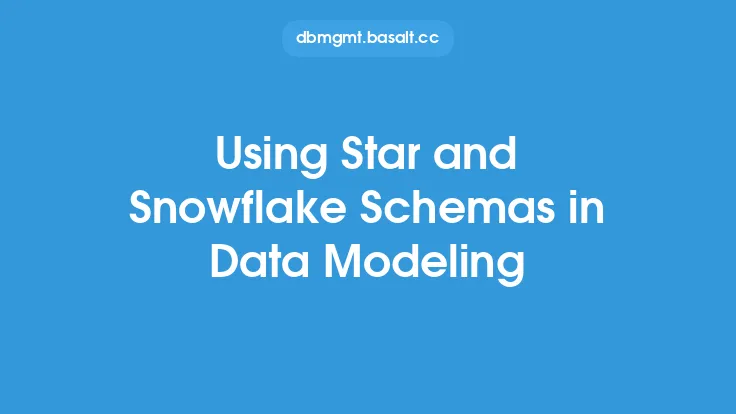Normalization is a fundamental concept in logical data modeling that plays a crucial role in ensuring the integrity and consistency of data within a database. It is a process of organizing data in a database to minimize data redundancy and dependency, which in turn helps to improve data integrity, scalability, and performance. Normalization involves applying a set of rules to the database design to ensure that each piece of data is stored in one place and one place only, making it easier to maintain and update.
Introduction to Normalization
Normalization is based on the concept of normal forms, which are a set of rules used to normalize a database. The most common normal forms are First Normal Form (1NF), Second Normal Form (2NF), and Third Normal Form (3NF). Each normal form builds on the previous one, with 1NF being the most basic and 3NF being the most advanced. The goal of normalization is to ensure that each table in the database has a unique set of attributes that are dependent on the primary key, which is a unique identifier for each row in the table.
Benefits of Normalization
Normalization offers several benefits, including improved data integrity, reduced data redundancy, and improved scalability. By storing each piece of data in one place and one place only, normalization helps to eliminate data inconsistencies and errors. It also reduces data redundancy, which can lead to data inconsistencies and errors. Additionally, normalization improves scalability by making it easier to add new data or modify existing data without affecting the entire database. Normalization also improves data security by reducing the risk of data breaches and unauthorized access.
Normal Forms
As mentioned earlier, there are several normal forms, each with its own set of rules. The most common normal forms are:
- First Normal Form (1NF): Each table cell must contain a single value, and each column must contain only atomic values.
- Second Normal Form (2NF): Each non-key attribute in a table must depend on the entire primary key, not just one part of it.
- Third Normal Form (3NF): If a table is in 2NF, and a non-key attribute depends on another non-key attribute, then it should be moved to a separate table.
- Boyce-Codd Normal Form (BCNF): A table is in BCNF if and only if it is in 3NF, and there are no transitive dependencies.
- Higher Normal Forms: There are several higher normal forms, including 4NF, 5NF, and 6NF, each with its own set of rules and benefits.
Applications of Normalization
Normalization has several applications in database design and development. It is used to design and develop databases that are scalable, secure, and efficient. Normalization is also used to improve data integrity and reduce data redundancy. Additionally, normalization is used to improve database performance by reducing the amount of data that needs to be stored and retrieved. Normalization is also used in data warehousing and business intelligence to improve data quality and reduce data errors.
Normalization Techniques
There are several normalization techniques, including:
- Eliminating repeating groups: This involves eliminating repeating groups of data and replacing them with separate tables.
- Eliminating partial dependencies: This involves eliminating partial dependencies by creating separate tables for each non-key attribute.
- Eliminating transitive dependencies: This involves eliminating transitive dependencies by creating separate tables for each non-key attribute that depends on another non-key attribute.
- Using surrogate keys: This involves using surrogate keys, such as auto-incrementing IDs, to uniquely identify each row in a table.
Challenges and Limitations of Normalization
While normalization offers several benefits, it also has several challenges and limitations. One of the main challenges of normalization is that it can lead to increased complexity, which can make it more difficult to design and develop databases. Additionally, normalization can lead to reduced performance, as it can require more joins and subqueries to retrieve data. Furthermore, normalization can be time-consuming and require significant resources, especially for large and complex databases.
Best Practices for Normalization
To get the most out of normalization, it is essential to follow best practices, including:
- Start with a clear understanding of the business requirements and data needs.
- Use a systematic approach to normalization, such as the normal forms.
- Use data modeling tools and techniques, such as entity-relationship diagrams, to design and develop databases.
- Test and validate the database design to ensure that it meets the business requirements and data needs.
- Continuously monitor and maintain the database to ensure that it remains normalized and optimized.
Conclusion
Normalization is a fundamental concept in logical data modeling that plays a crucial role in ensuring the integrity and consistency of data within a database. By applying the rules of normalization, database designers and developers can create databases that are scalable, secure, and efficient. While normalization offers several benefits, it also has several challenges and limitations, and it is essential to follow best practices to get the most out of normalization. By understanding the benefits, applications, and techniques of normalization, database designers and developers can create high-quality databases that meet the needs of businesses and organizations.
